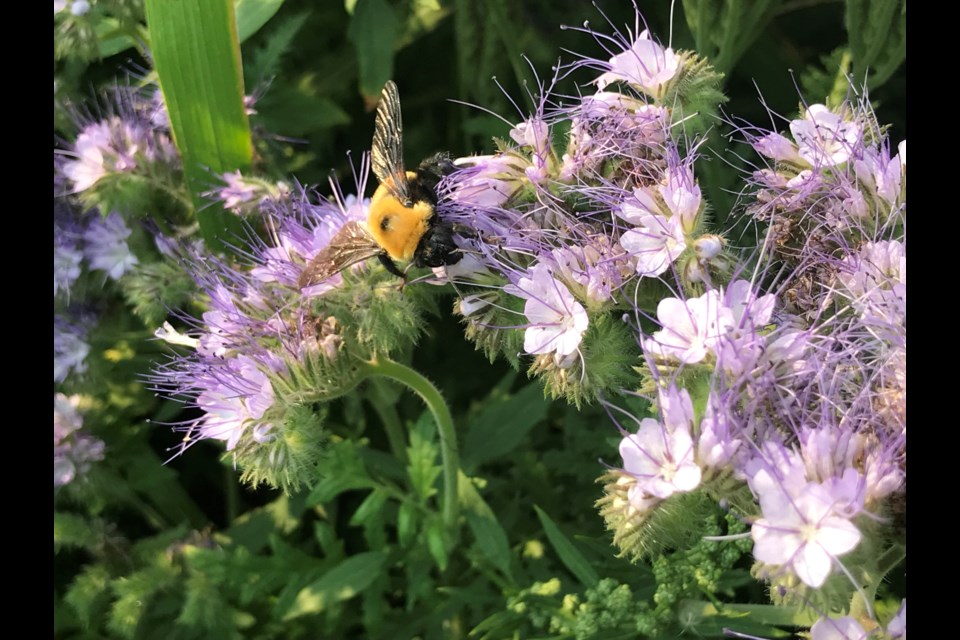When farmers are considering growing cover crops, they might also want to think about including plants that are good for nature’s pollinators.
Kevin Elmy farms in the Saltcoats area where he has evolved his farm into one more in tune with the way nature does things, and that effort has him looking to add flowering plants to cover crop mixes.
Elmy said the impact on pollinators, in particular bees came into focus “three or four years ago when bee populations were disappearing.”
“How we farm today,” was one of the things that was С����Ƶ looked at as a cause of the declines, in particular the use of Neonicts a family of insecticides.
“Is that part of it? Maybe,” said Elmy.
Another issue might simply be that there is not as much food for bees in agricultural areas these days.
“Canola flowers for four weeks, and it’s done,” said Elmy. “There are less pastures. Bush is getting pushed (down).”
That trend means fewer flowers, which means less nectar as food for pollinating insects such as bees, and other species such as ladybugs, lacewings and even crickets, said Elmy.
But producers have an opportunity to help wild pollinator populations, at least those using cover crops.
A definition of a cover crop on Wikipedia is that “acover crop is planted to manage soil , , soil quality, water, , , diseases, and wildlife in an —an ecological system managed and shaped by humans. Cover crops may be an off-season crop planted after harvesting the cash crop.”
Elmy said farmers can make sure to include flowering plants in cover crops, adding the best approach is to incorporate plants which flower at different times of the spring and summer season to maintain food for pollinator insects for longer periods of times. He said plants such as phacelia, sunflowers, and various species of clovers can be grown in combination to provide the best environment for pollinators.
In the case of phacelia, it is an annual which Elmy said is one of the best of all pollinator attractors of all.
“It produces some of the highest quality nectar,” he said, adding as a result bees also produce “some of the highest quality honey” from the flowers.
In addition phacelia is “a desert plant. It’s a water sipper, so it’s not going to dry out the soil,” said Elmy.
Therein lies one of the added benefits various cover crop plants can provide.
Another example is the ability of cover plants to fixate nitrogen in the soil for future crops to access.
Elmy said farmers do not need to plant an entire field to flowering cover crops to help pollinators.
“It’s a tool. You don’t have a lot of rules per se,” he said, although research is beginning to show the more pollinating insects, the more pollen transfer in all crops.
With that in mind Elmy said producers might want to grow a cover crop for pollinators in an area of a field that generally does not produce well, or in a bottleneck area where their equipment doesn’t maneuver easily.
When an environment is suitable for pollinating insects it is generally good for beetles that like eating weed seeds, or predator insects too, noted Elmy, adding that is another aspect to a cover crop.
Cover strips around a pea or flax field can be home to bugs that like aphids to eat, so if aphids that would impact the pea or flax crop start to move in “you have this police force on the outside of the field (predator bugs)” ready to naturally control the pests.




